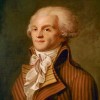 1789 saw the publication of Olaudah Equiano’s Interesting Narrative of the Life of Olaudah Equiano, Or Gustavus Vassa, The African. Exact month of publication unknown; if you have information about the correct date, please email felluga@purdue.edu with this information. The book describes Equiano's time as a slave and his life after achieving his freedom. Image: Engraving for Equiano's Interesting Narrative. This image is in the public domain in the United States as its copyright has expired.
1789 saw the publication of Olaudah Equiano’s Interesting Narrative of the Life of Olaudah Equiano, Or Gustavus Vassa, The African. Exact month of publication unknown; if you have information about the correct date, please email felluga@purdue.edu with this information. The book describes Equiano's time as a slave and his life after achieving his freedom. Image: Engraving for Equiano's Interesting Narrative. This image is in the public domain in the United States as its copyright has expired.
Articles
Isaac Land, “On the Foundings of Sierra Leone, 1787-1808″

 This timeline is part of the ENG 272 collaborative "Age of Romanticism" Timeline, one element of the Image, Event, Place Project. Add one timeline element that is related or relevant in some way to the work we have been reading in the first several weeks of class. Provide sufficient detail to explain the historical or cultural detail and, perhaps, how it relates to one or more literary works we have read. Be sure to cite your source(s) using
This timeline is part of the ENG 272 collaborative "Age of Romanticism" Timeline, one element of the Image, Event, Place Project. Add one timeline element that is related or relevant in some way to the work we have been reading in the first several weeks of class. Provide sufficient detail to explain the historical or cultural detail and, perhaps, how it relates to one or more literary works we have read. Be sure to cite your source(s) using 











